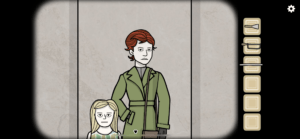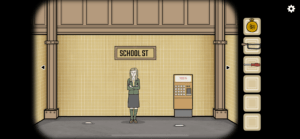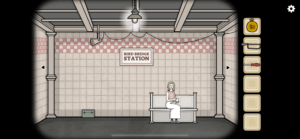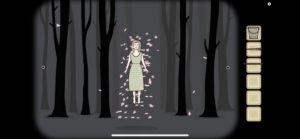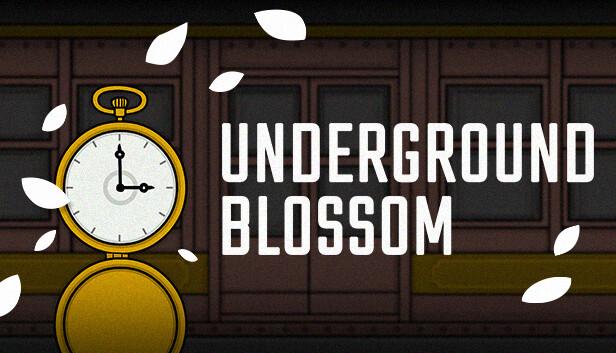Underground Blossom is a point-and-click puzzle game developed by Rusty Lake playable on Windows, Android, Mac, and iPhone. The game is for people of all ages with an interest in puzzles with a psychological horror atmosphere. The puzzle mechanics in Underground Blossom shape the player experience, offering a blend of challenge and immersion. By including a variety of puzzle types, including object, people, and information puzzles, the player achieves fun through challenge and narrative. In addition, integrating into puzzles references to previous games allows long-time fans to relish in nostalgia and new players to still successfully complete the puzzles.
In Underground Blossom, the inclusion of references to previous games in the series adds layers of depth to the player experience. An example of this is found in the newspaper puzzle where players must correctly match photos with headlines. For players familiar with the Cube Escape series, the sight of the dead couple with a birthday cake triggers memories of the “birthday massacre” scene in Cube Escape: Birthday. This subtle connection evokes a sense of nostalgia and highlights the overarching narrative by establishing continuity across games. However, the puzzle design ensures that new players aren’t left behind. Even without prior knowledge of the references, they can still complete the puzzle by relying on context clues in the picture. This clever approach allows both old and new players to enjoy the game and participate in its immersive storytelling experience.
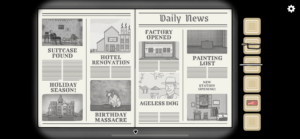
The game also uses a variety of puzzles (object, people, and information) to keep players engaged and challenged. The significant usage of object puzzles added to the aesthetic of challenge by requiring players to be creative and resourceful. For example, when needing to retrieve an item from a drain without a fishing stick, players were forced to use the variety of materials hidden in the train station to create a solution. I was able to make a makeshift rod by attaching a piece of wire to a branch, and adding a hook onto the end. These types of puzzles encourage players to think critically and creatively to use objects in ways they may not have been originally intended for.
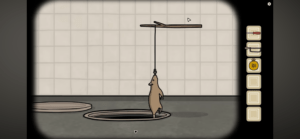
People puzzles, like the one involving a student’s yearbook, offer unique challenges as they require interaction with NPCs to progress. For instance, players encounter a student who offers a deal: help him match names to faces in his yearbook, and he promises a reward in return. Players must interact with several students, placing objects like peanuts or planes on their head and observing their reactions. This clever puzzle adds challenge to the game while also being unique, as traditional escape games like Room Escape: 50 Rooms contain primarily information or object puzzles.
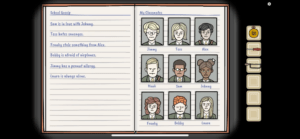
While the information puzzles in Underground Blossom offer a fun challenge, there is room for improvement in ensuring that the difficulty level isn’t too challenging to the point of frustration. While some puzzles were relatively straightforward, such as following the direction and number of arrows, others proved to be very difficult. For instance, one of the final puzzles involved arranging blocks with directional cues to guide a bug from the starting point to the end. However, with over thirty options to place the six blocks, the puzzle became extremely challenging. One of the thirteen rules of puzzles discussed in lecture stated that puzzles should take less than five minutes to complete, yet I found myself stuck on this puzzle for over an hour before resorting to watching a walkthrough. This prolonged challenge led to a significant level of frustration and defeat. To address this issue, the game designers could consider providing a limited number of in-game hints accessible within the interface. These hints would allow players to receive partial assistance while still feeling immersed and satisfied with solving the puzzle themselves.
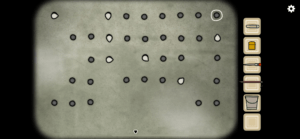
Underground Blossom’s gameplay is structured around two primary arcs: the immediate puzzle-solving challenges within each station and the overarching narrative. As players navigate through different stations, they encounter a variety of puzzles that range in complexity, requiring strategic thinking and careful observation to solve. The consistent format of completing puzzles before advancing to the next station provides players with a clear sense of direction and progression. This mechanic not only reinforces the gameplay loop but also effectively intertwines with the narrative.
However, these arcs contribute to a deeper narrative exploration of the protagonist, Laura, and the events that have shaped her life. As players travel through the stations, they witness pivotal moments in Laura’s life from childhood to adulthood, including her experiences in school and her relationships with her mother, boyfriend, and guardian. The overarching puzzle allows for exploration of the mysteries surrounding Laura’s past and the fate of her mother who was abducted. Using puzzles to piece together the narrative, players participate in Laura’s story, ultimately allowing her to blossom.
